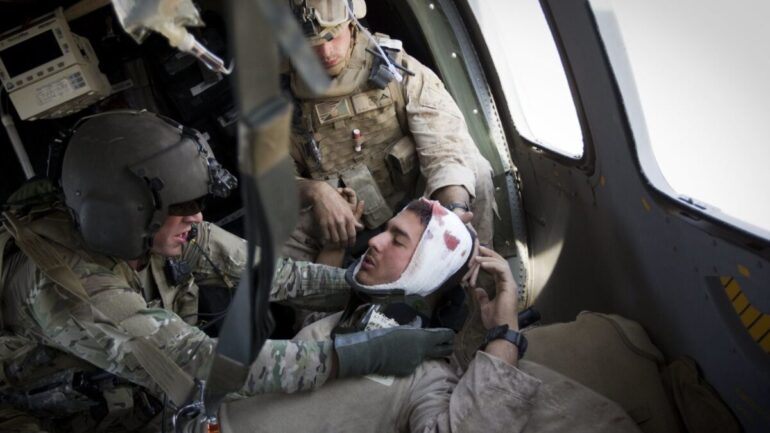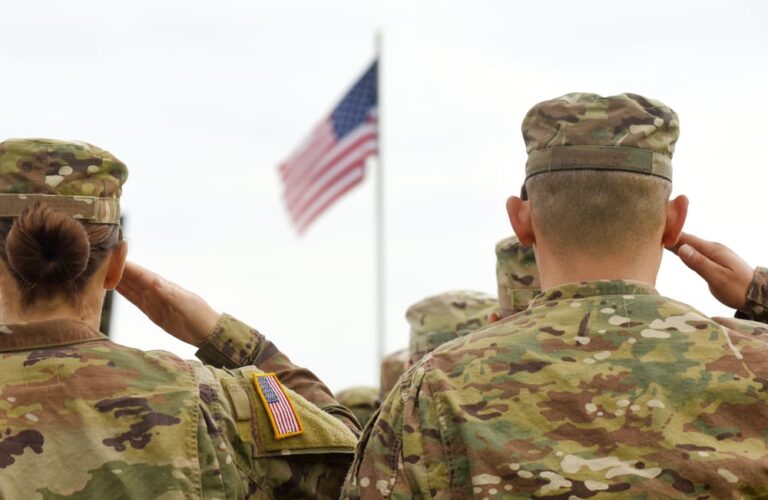Embarking on a journey post-Navy service is a transformative experience filled with victories and difficulties. Those who valiantly wear the uniform commit years of their lives to guard their nation’s interests, often in taxing and strenuous situations. When their period of service concludes, a fresh episode starts, accompanied by its unique hurdles. From acclimatizing to civilian lifestyles, securing employment, managing mental health problems, and maintaining social ties, navy veterans encounter numerous challenges that demand resilience and backing.
The write-up explores the prevalent difficulties that Navy veterans face, highlighting the necessity to acknowledge and aid these courageous individuals as they embark on their post-service adventure.
1. Physical Health Difficulties

Military personnel, particularly those in the Navy, are consistently exposed to risky surroundings and subjected to physically intense workouts. These demanding environments frequently give rise to chronic health complications, some of which might not become apparent until many years of service. Injuries to the musculoskeletal system, for instance, are typical due to Navy officers’ strenuous physical drills and demanding duties.
The next common affliction among veterans is traumatic brain injuries, often resulting from combat, training accidents, or blasts from explosive devices. The effects of such injuries can be enduring, including cognitive deficits, mental health problems, and physical incapacity. Hearing impairment, commonly referred to as tinnitus, is yet another persistent issue among veterans, primarily caused by ongoing exposure to loud turbines, gunfire, and explosive detonations without adequate ear protection.
Navy veterans also face health issues that can be fatal, such as mesothelioma. It is lung cancer caused by asbestos exposure. You can learn more about exposure in the Navy from resources such as Mesothelioma Hope.
Numerous Navy vessels constructed between the 1930s and 1970s utilized asbestos for insulation and fire resistance. Veterans who served on these ships may have inhaled asbestos fibers, which can lodge in the lungs and result in ailments like asbestosis, lung cancer, and mesothelioma. The latency period for these diseases can be extensive, often requiring decades for symptoms to surface, resulting in late-stage diagnosis and treatment.
2. Mental Health Difficulties
Mental health concerns are considerably common among Navy veterans, mainly due to high-stress scenarios and traumatic occurrences they face on duty. They are greatly prone to disorders such as Post-Traumatic Stress Disorder (PTSD), depression, and anxiety.
Additionally, the military’s strong culture of resilience and fortitude often discourages veterans from seeking assistance, which can exacerbate untreated mental health conditions. When veterans do try to reach out for help, they often face obstacles such as insufficient mental health services and stigmatization, further complicating their path to recovery.
3. Transitioning to Civilian Life

For numerous veterans, shifting from a military to a civilian lifestyle can pose challenges. The military environment is highly structured, with clear expectations and a powerful sense of camaraderie. Transitioning to a civilian setting, where such structures and communities may not be close by, can lead to feelings of isolation and confusion.
Given the nature of their service, Navy veterans might encounter an added difficulty during this transition. Prolonged periods at sea and foreign deployments might lead to a more profound detachment from civilian life, making reintegration more challenging.
4. Employment Obstacles
Another challenge that veterans confront is securing employment. Although military personnel possess many adaptable skills like leadership, discipline, and problem-solving abilities, they often struggle to articulate these skills effectively to potential employers unfamiliar with military duties and responsibilities.
Moreover, the competitive nature of the job market, coupled with a lack of civilian professional networks, can make the job search more challenging. Consequently, numerous individuals, especially those with disabilities, may experience financial issues as they might not be able to work full-time.
5. Substance Use Disorders

Regrettably, substance misuse problems are common among Navy veterans. They may resort to unhealthy coping methods to manage the physical discomfort and emotional distress they experience during combat. The rigors of military life, exposure to conflict, and the challenges of readjusting can lead to higher rates of alcoholism, prescription drug abuse, or illicit drug use.
If left untreated, these problems can escalate, increasing the chances of homelessness, legal troubles, unstable relationships, and declining health. Substance use disorders can further complicate the difficulties that retired Navy officers encounter after their service, making it more difficult for them to find employment and successfully reintegrate into society.
6. Social Isolation
Exiting the Navy isn’t just about giving up the uniform. It involves parting from a fraternity and sorority, a common language of experiences that most civilians find difficult to understand. This can make the transition back to civilian life a solitary one, and for some veterans, it can feel like they’ve lost their grounding. This isolation can magnify mental health issues and increase the propensity to seek comfort in substance use. But with the correct backing – understanding communities, strong veteran networks, and readily available mental health resources – we can assist our veterans in steering through the sea of change, ensuring they don’t feel unanchored in their post-service existence.
7. Homelessness

Securing a home isn’t always a certainty for those returning from service. In fact, Navy veterans are more likely to face homelessness than the average individual. It’s a startling statistic, considering these individuals once put their lives on the line for their country. The causes are numerous—low income, unaffordable housing, and mental and physical health challenges. Coupled with the rocky transition to civilian life, these hurdles can thrust veterans into a cycle of instability.
8. Strains in Family and Relationships
Frequent deployments and extended periods away from family can significantly strain relationships. The physical absence of the Navy veteran during pivotal moments and milestones can create emotional distance and feelings of isolation for both the service member and their family. The reintegration process post-deployment can also be challenging, as adjustments must be made to adapt to changes that took place during the separation. Transparent and open dialogue is crucial in addressing these strains, allowing for a better understanding of each other’s experiences and feelings.
Conclusion
Navy veterans, like all veterans, have made profound sacrifices in the service of their country. As they transition back into civilian life, it’s crucial that they receive the required support to overcome the challenges they encounter. By addressing these issues through a blend of policy reform, community backing, and personal resilience, we can ensure our Navy veterans successfully navigate the currents of civilian life.

